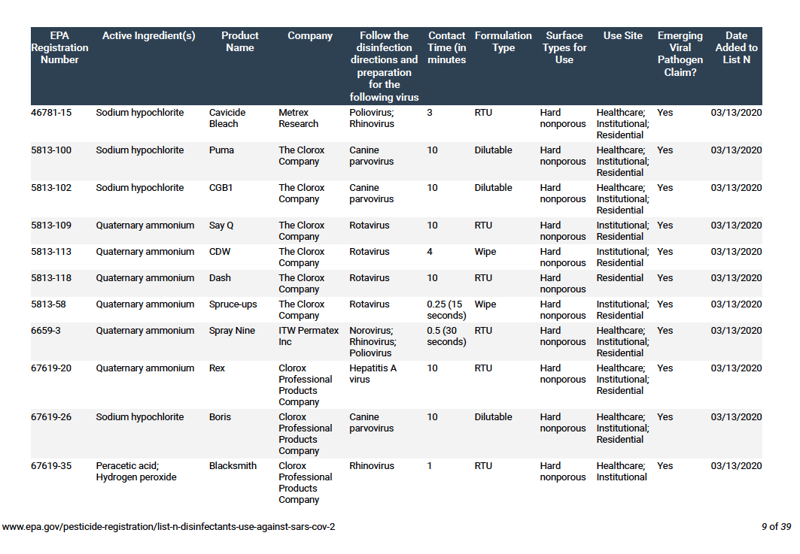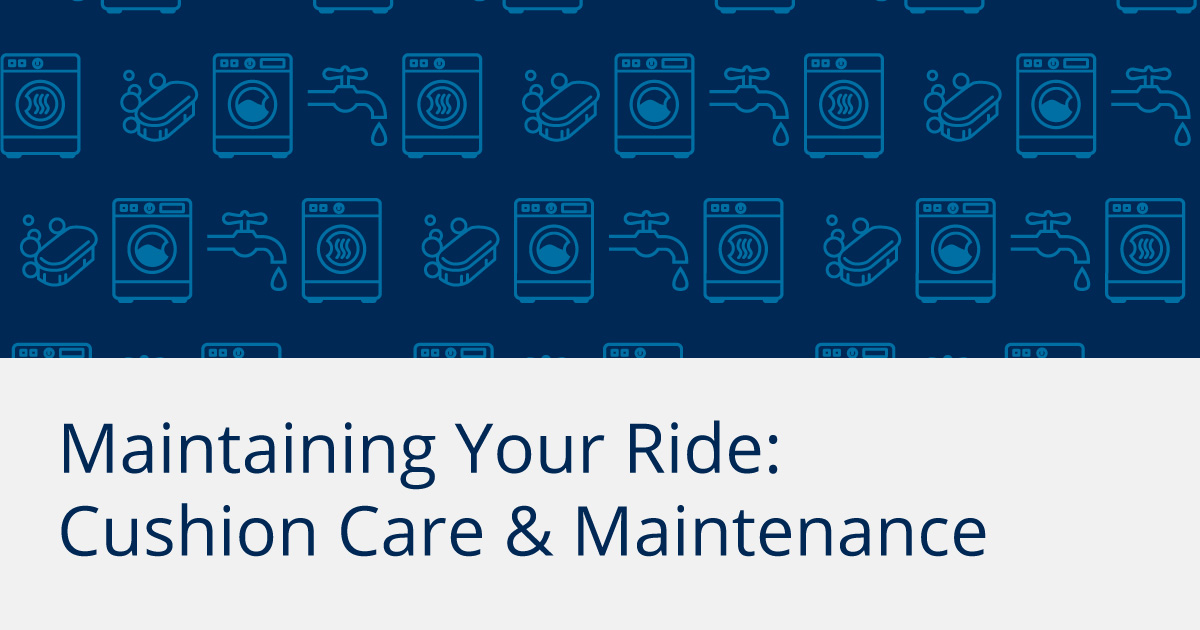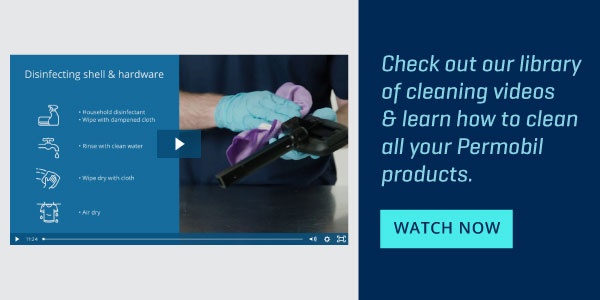This is our first blog in the series Maintaining Your Ride. Check out blog 2, blog 3, and blog 4.
We maintain so many things within our lives. We take care of ourselves and our homes, and we regularly maintain our vehicles and bikes, so why would wheelchair and seating components be any different? Wheelchairs and seating components are high performance pieces of equipment that need to be maintained and upkept. In this series we are going to go over specific ways to clean and maintain your power wheelchair, manual wheelchair, and seating and positioning products. As always please refer to your owner’s manual specific to whatever piece of equipment you are using. The owner’s manual is a great resource that contains information specific to your equipment. If you have misplaced your owner’s manual, most manufacturers have digital copies that are available online for download. You can find Permobil owner manuals here.
Cushion Care and Maintenance
Our first topic of discussion is cushion care and maintenance. Cleaning is the first step in cushion care. Please wear the appropriate personal protective equipment depending on what chemicals and/or cleaners you may be working with. Cleaning, for most of us, is very familiar. Essentially cleaning is freeing the object, in this case a cushion, from dirt or pollution. Disinfecting is the second step of cushion maintenance and is a separate process. Cleaning and disinfecting are sometimes talked about as if it is one thing, but truly it is not. Disinfecting is its own process and is freeing an object from infection and/or potentially harmful microorganisms, viruses, etc.
In light of what is going on in the world with the COVID-19 pandemic, this online resource from the EPA lists out approved disinfectants for use against SARS-CoV-2, the virus that causes COVID-19. There are many different cleaners that come in different forms, so this list will help you understand what type of disinfectant it is such as a wipe or if the disinfectant is dilutable or needs to be used full strength. This resource also tells us how long the disinfectant needs to stay on the product. This is an important piece of information because contact time varies widely by disinfectant from seconds to as long as 10 minutes in the example below. It could be difficult to keep a disinfectant on a product for that long while a disinfectant that works in seconds could be more feasible depending on what you’re disinfecting and where you’re disinfecting it. Keep in mind this is a small representation of the entire list of disinfectants.

Cleaning and Disinfecting a Cushion
Most seating products on the market have a cover, and we’re going to be looking at cleaning a ROHO cover specifically. Click here to download a PDF version of instructions on how to clean a ROHO DRY FLOATATION cushion and cover. Again, consult the instruction manual for whatever product you’re using, but the instructions will likely be similar. First step is to remove the cushion from the cover. If you have hook and loop fasteners attached, remove them from the cover so you don’t cause any fabric damage. After having removed the cover from the cushion, machine wash the cover on the gentle cycle in cold water with a mild detergent or wash by hand with neutral detergent. Tumble dry on low or no heat or hang to air dry. These are pretty standard instruction for washing a cushion cover. For disinfecting the ROHO cushion cover, after the cover has been cleaned machine wash on the gentle cycle in hot water with mild detergent, or hand wash in warm water with a mixture of 9 parts water to 1 part bleach. Rinse with fresh water, and tumble dry on low or no heat, or hang to air dry.
For cleaning the cushion specifically, remove the cover and close the valve(s). Begin by rinsing and removing anything between the cushion cells. If there is something that has dried solid on the cushion and is sticking cells together, it is best to soak the stuck together cells with warm water to loosen and gently pull apart to avoid damaging the cushion. Place the cushion in a large sink or clean shower/tub and hand wash the cushion using a mild dishwashing liquid or laundry detergent. Use a soft plastic bristle brush, sponge, or washcloth to gently scrub all between the cushion surfaces, making sure to scrub in both directions between the cells. Rinse with water and hang to dry.
Disinfecting a ROHO cushion is going to be similar to cleaning. Repeat previous cleaning instructions using a solution of 9 parts warm water to 1 part household bleach. Most germicidal disinfectants are safe if the manufacturer’s dilution directions are being followed. Keep the clean product wet with bleach solution for 10 minutes, then rinse thoroughly with fresh water. Hand the cushion to air dry completely.
Once the cushion and cover are both dry, replace the cushion inside the cover. Use the directional labels on the side of the cushion cover to be sure the cushion is inserted correctly. Zip the cover and place the cushion on the wheelchair. Follow cushion setup instructions in the product operation manual provided with the cushion.
Cleaning a Foam Cushion
Handwashing foam products can include foam from a headrest, lateral support, back support, or cushion. Please do seek out the manufacturer’s recommendation for the particular product you have. For handwashing foam, wipe the foam by using a damp cloth and air dry. Most of the time soap is not recommended on the foam. Please note that disinfectants are not effective on porous material such as foam.
Disinfecting Shell & Hardware
Cleaning and disinfecting all the other pieces of a seating and positioning product such as hardware, laterals, thigh guides, or a back support shell are also important. Clean these products and then disinfect with a household disinfectant, rinse with cold water, and wipe dry with a cloth or air dry.
Check back next week as we discuss power and manual wheelchair cleaning and disinfecting. Want to hear more about wheelchair and cushion maintenance? Check our our podcast all about this topic.

Tricia Garven, MPT, ATP
Regional Clinical Education Manager
Tricia is currently a Regional Clinical Education Manager at Permobil. Prior to joining the clinical team at Permobil, she was in a similar role as the Clinical Applications Manager for ROHO. Previously, in clinical practice, Tricia specialized in neuro rehabilitation at Baylor Institute for Rehabilitation (BIR) in Dallas, Texas. While working at BIR, she gained extensive knowledge in the prescription and training of custom wheelchairs and seating. She also worked as the outpatient wheelchair seating clinic specialist. Now with Permobil, Tricia is presenting educational programs to therapists and DME providers regarding seating, mobility and pressure ulcer prevention. Tricia is an active member of RESNA, Clinician’s Task Force, and the APTA. Within the APTA, Tricia is a member of the Neurology Section as well on the nominating committee for the newly formed AT-SWM SIG.

